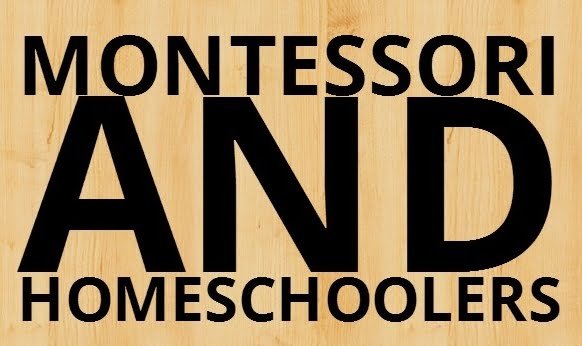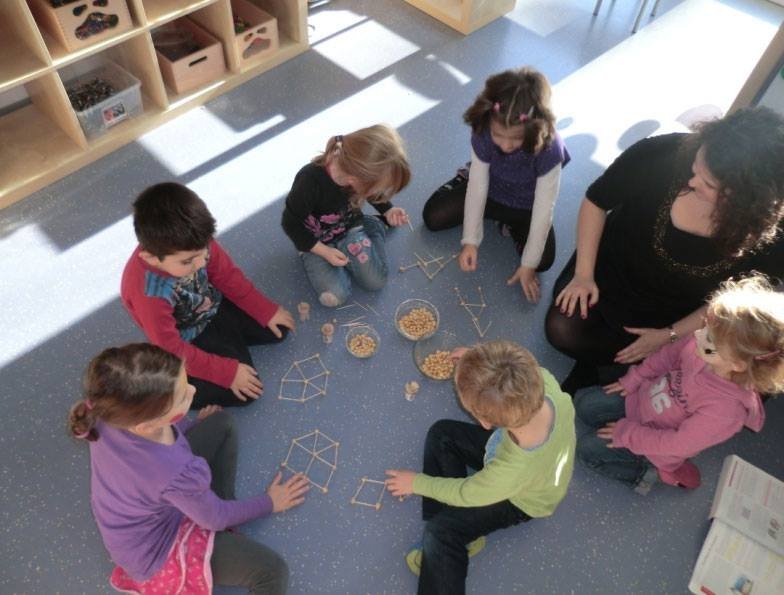Parents who are looking for alternatives to traditional public schools for their children may be struggling with what approach is the best to take. There are many different options available and deciding what is best for your child and your family is a decision that should not be taken lightly. Many parents consider homeschooling to be the best choice for their family’s lifestyle. Homeschooling allows parents to truly take their child’s education into their own hands.
Parents who make the decision to homeschool are wise to do a great deal of research on some of the different homeschooling styles that are out there. There are many different philosophies that are popular in home school settings, ranging from those that look similar to traditional schools, to a very open ended philosophy known as unschooling, to an eclectic mix which marries several styles into one home classroom. One of the styles that many parents have found to be successful is the Montessori style.
Montessori classrooms are popular in early childhood education all over the world, and are praised for their child-centered, hands-on approach. The Montessori style is a discovery-based form of education where children are presented with a prepared environment designed to stimulate learning through experience and exploration. This style translates nicely to the home school setting, and many parents have found it to be the best way to educate their children.
Montessori Overview
The Montessori approach begins in early childhood, and is designed to provide students with the love of learning and inquisitive nature that will prepare them for later academic success. A Montessori classroom is filled with age and size appropriate materials designed with the goal of promoting self-discovery, problem solving and natural connections.
All of the materials in a Montessori setting are designed to be handled by children, and are placed at a level where they can access them and also clean them up independently. One of the hallmarks of a Montessori education is just this: materials should be child-appropriate, carefully selected and placed on child-height shelves. Everything has its’ place in this type of environment and independence is fostered as children are responsible for their own clean up.
In this atmosphere, children select the materials that they would like to work on and at the pace they would like to work. There is choice and freedom within limits, as opposed to a more traditional education where children are propelled through a predetermined set of curriculum, at a predetermined pace.
As children mature, their self-discovery based learning is extended to include reading, writing and math activities. Again in these activities, exploration and connections are stressed. Independent research is stressed, as is community service, collaboration and independence.
Montessori in the Homeschool
The Montessori approach is one that lends itself very well to a homeschool environment. Parents who are searching for just the right sort of atmosphere for their homeschool may very well find that the Montessori approach toward self-directed and hands-on activities fits quite well into their philosophy as well as their lifestyle. Homeschool parents may opt to try out a completely Montessori-based home classroom, or start by including some elements of the approach into their home.
Materials in a Montessori Homeschool
In a certified Montessori school, there are certain materials that you will find in every classroom. Many of these materials have been in use since Maria Montessori first tried her approach out in Italy in the early 1900s. These items are made of high quality durable materials designed to grow with the child, and to last for many years of hands-on use.
Many parents shy away from using the Montessori style because they feel that they cannot truly do it correctly without the use of these special manipulatives. Instead of purchasing all of the Authentic Montessori materials, parents can select to purchase a few pieces and then supplement their curriculum with other discovery based toys and items that they probably already have in their home. While it is true that Montessori teachers are specially trained and use sanctioned materials, parents schooling at home can still follow the spirit of the Montessori inspiration without becoming a certified Montessori teacher, and spending the money involved in purchasing only authentic materials. If you remember that the goal of this style of education is to observe the child and determine their needs as opposed to following a set curriculum, you are on the right track.
The materials in a Montessori program fall into three main categories: sensorial, practical life, and academic subject materials.
Sensorial materials are those hands-on items that are meant to be used and handled for many years, so it is important that they are made of high quality. These items help children learn about their world through their senses of sight, sound and touch. Through these tools, children will learn beginning concepts involving math and science principles as well, although they may not be labeled as such. Through these materials, children will learn about how things fit together, and make connections between things in the world around them. In addition to authentic Montessori sanctioned materials, parents can use toys like the Spielgaben, which is designed to grow with a child as they mature. Children can first use the materials to build and create, and later for making connections about geometric and design principles.
Practical Life Materials are those materials that allow children to mimic the actions of the adults around them, using appropriately sized and designed tools. Children learn things like self-grooming, home care skills like setting a table, as well as crafts like sewing, woodworking and flower arranging. By allowing children to experiment with these concepts at an early age, they can truly discover the things that interest them, and develop their own interests as opposed to following the interests of the adults around them. These sorts of tasks not only foster independence and a sense of contribution to the family, but also logical problem solving, concentration, good manners, and a good self-image!
Academic Subject materials are those materials that focus on more traditional subjects such as reading, writing, math and science. The teacher presents lessons in all of these focus areas to the child, and they have the liberty to decide what to study. A Montessori homeschool should be filled with books on a variety of topics such as these.
Depending upon the demonstrated interest of the child, parents should also supplement these materials with music, art and physical education types of activities. By exposing children to these curricular areas, they may then develop interests in any or all of these disciplines.
You can see that for all three types of materials, there are materials currently in your home that can be used in conjunction with materials you purchase. The best Montessori homeschools have a mix of both.
Preparing the Environment for a Montessori Homeschool
To create a Montessori environment, parents should look at rooms from a child’s point of view. Pictures should be hung at a low level so that they can see and enjoy them. Furniture should be sized appropriately for the ages of the children who will be using it. Appreciation of quality and beauty are two more important principles of the Montessori approach, so using materials that encourage this is important. That does not mean that items must be expensive, but rather made from natural materials, and aesthetically pleasing.
Trays and baskets provide an easy way for children to sort their materials and take the responsibility for keeping them clean and tidy. Instead of traditional toy boxes, where items can just be randomly “dumped” this helps to maintain order, allow children to be independent, and also help them develop an appreciation for organization and tidiness. Shelves should be low enough for children to reach their materials independently.
Another way to keep children interested in materials, and also control clutter, is to only put a few items out at a time, in rotation. Once a child seems to be losing interest in a particular item, home teachers should store them and introduce new materials. The previous items can be reintroduced later for renewed interest, and possibly discoveries for new uses.
Other ways to establish a Montessori inspired homeschool
If you keep in mind the simple principle that children are capable of discovering their own interests, you will find that there are a variety of simple ways to incorporate the Montessori spirit into your home classroom. Also, all of the learning does not have to take place inside your home. The world around us is full of learning opportunities!
For instance, if your child is interested in music, take them to see different types of live performances. Take them to stores that sell instruments so that they can see, hear and touch them.
Take walks with your child year-round. Look for changes in the environment with each season. Look for evidence of animal life and study their habitat.
Plant a garden to study plant growth. Visit a farmer’s market to discover different types of fruits, vegetables or plants.
The key is to take time with your child. Involve them in uninterrupted conversations. Listen to them completely. Answer their questions, and encourage them to research the things they truly want to know.






